

Project Overview
案例概述
In May 2024, Huayang Road Sub-district in Shanghai's Changning District successfully adopted the ambient-temperature carbonization technology system from Shanghai Taiji Technology Co., Ltd., and established the city's first community-level demonstration station for wet waste recycling and resource utilization.The project utilizes a wet waste treatment technology that operates at ambient temperature and pressure. It leverages the adsorption and surface catalytic capabilities of biochar. Specialized composite biochar is used to encapsulate the wet waste, which promotes its degradation and simultaneously absorbs the generated wastewater and exhaust gases, thus preventing secondary pollution. By applying the "modified carbon technology" and a "microorganism-catalysis coupling" system, the project converts wet waste into high-value-added biochar at ambient temperature, achieving the goal of "on-site transformation of organic waste into resources."
2024年5月,上海市长宁区华阳路街道,成功引入上海泰迹科技有限公司的常温炭化技术系统,建成全市社区级湿垃圾资源化处理示范站。项目通过湿垃圾常温常压处理技术,利用生物炭吸附与表面催化能力,以特制组合炭包裹湿垃圾,促进湿垃圾降解,并吸附产生的废气废水,避免二次污染。采用“调和炭技术”,通过“微生物-催化耦合”体系,在常温下让湿垃圾转化为高附加值生物炭,实现“有机废弃物就地变资源”。
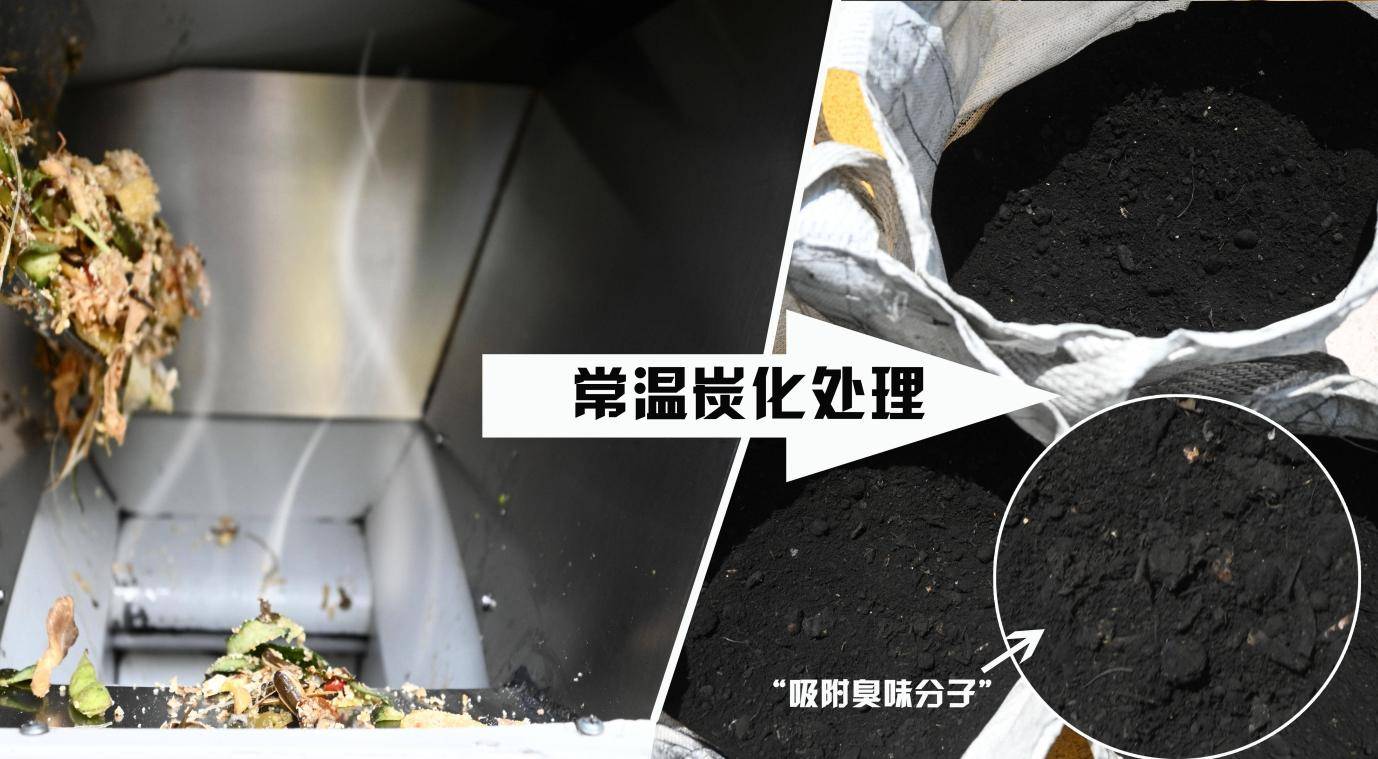
The project is based in the existing garbage room of the Tao'an Residential Quarter, where modular processing equipment covering only 3 square meters has been installed. This achieves closed-loop, full-chain management of wet waste, from generation and treatment to reuse. Starting at the source of waste generation, smart sensors collect real-time data, such as the weight and composition of the wet waste, which is then uploaded to a mini-program platform to form a complete data chain. The resulting products—carbon-based materials and organic fertilizer—are incorporated into a digital management system to track their output, destination, and use. Digital enablement has not only improved processing efficiency but also maximized resource utilization.
项目依托陶安小区现有的垃圾房空间,部署了占地仅3平方米的模块化处理设备,实现了湿垃圾“产生-处理-回用”的全链条闭环管理。从垃圾产生源头开始,借助智能感应设备,实时采集湿垃圾的重量、成分等数据,上传至“小程序”平台,形成完整的数据链。处理后的产物——炭基料和有机肥料,纳入数字化管理体系,记录其产量、去向和使用情况。通过数字化赋能,不仅提高了处理效率,还实现了资源的最大化利用。
Following the project's implementation, the cost of transporting wet waste from the residential quarter and its potential environmental impact have been reduced. Problems that once plagued the community, such as garbage odor and mosquito breeding, have been effectively resolved. Related complaints have dropped to zero, and resident satisfaction has soared to over 95%, leading to a qualitative improvement in the community environment. This project represents a successful and innovative practice that deeply integrates digitalization with environmental protection. It sets a new benchmark for the sustainable development of urban communities and provides a valuable reference for implementing more similar projects.
项目实施后降低了小区湿垃圾清运成本和对环境的潜在影响。曾经困扰社区的垃圾异味、蚊虫滋生等问题得到有效解决,相关投诉清零,居民满意度飙升至95%以上。社区环境得到了质的提升。项目是一次成功的创新实践,将数字化与环保深度融合,为城市社区可持续发展树立了新的标杆,也为更多类似项目的开展提供了宝贵的参考。
Company/Organization Profile
机构简介
Shanghai Taiji Technology Co., Ltd. is a subsidiary of Zhejiang Tanpu Technology Co., Ltd. Founded in 2018, Tanpu Technology has been deeply engaged in the environmental protection field for more than 17 years. It has successfully developed the normal-temperature carbonization and recycling technology for wet waste, obtained 14 patents and SGS certification, and passed the identification of Zhejiang Provincial Environmental Protection Science and Technology Achievements. The conclusion that the technology "reaches the domestic leading and international advanced level in terms of indicators" was applied for and demonstrated by Tanji Research Institute.Tanpu Technology has launched special catalysts such as "Harmonized Carbon" based on its core technology, which can efficiently integrate with wet waste at normal temperature. The treatment process produces no wastewater, no odor, and features low cost and wide applications. In collaboration with institutions including Zhejiang University and the Chinese Academy of Sciences, the company has established a research team of over 30 members.
上海泰迹科技有限公司是浙江炭朴科技旗下子公司。炭朴科技成立于2018年,深耕环保领域十七余年,成功研发湿垃圾常温炭化循环利用技术,获14项专利及SGS认证,通过浙江省环保科技成果鉴定,“指标达国内领先、国际先进水平” 的结论由炭极研究院申请并通过验证,其核心技术推出“调和炭 ”等特种催化剂,在常温下高效融合湿垃圾,处理过程无废水、无异味,且成本低,应用广泛。联合浙江大学、中国科学院等机构,组建起30余名的科研团队。
Project Outcome
项目成果
1. Emission Reduction Effectiveness: Through a distributed on-site treatment system, wet waste is converted into stable carbon materials. The entire process eliminates long-distance transportation, cutting off the carbon emission chain at the source. Only trace amounts of water vapor are released during the carbonization process, which reduces the full-life-cycle carbon footprint compared with traditional incineration. This provides a practical solution for the community to achieve its carbon neutrality goals.
1. 减排成效:通过分布式就地处理系统,将湿垃圾转化为稳定炭料,全程无长途运输环节,从源头切断碳排放链条。炭化过程中仅释放微量水蒸气,较传统焚烧模式减少全生命周期碳足迹,为社区碳中和目标提供可落地的解决方案。
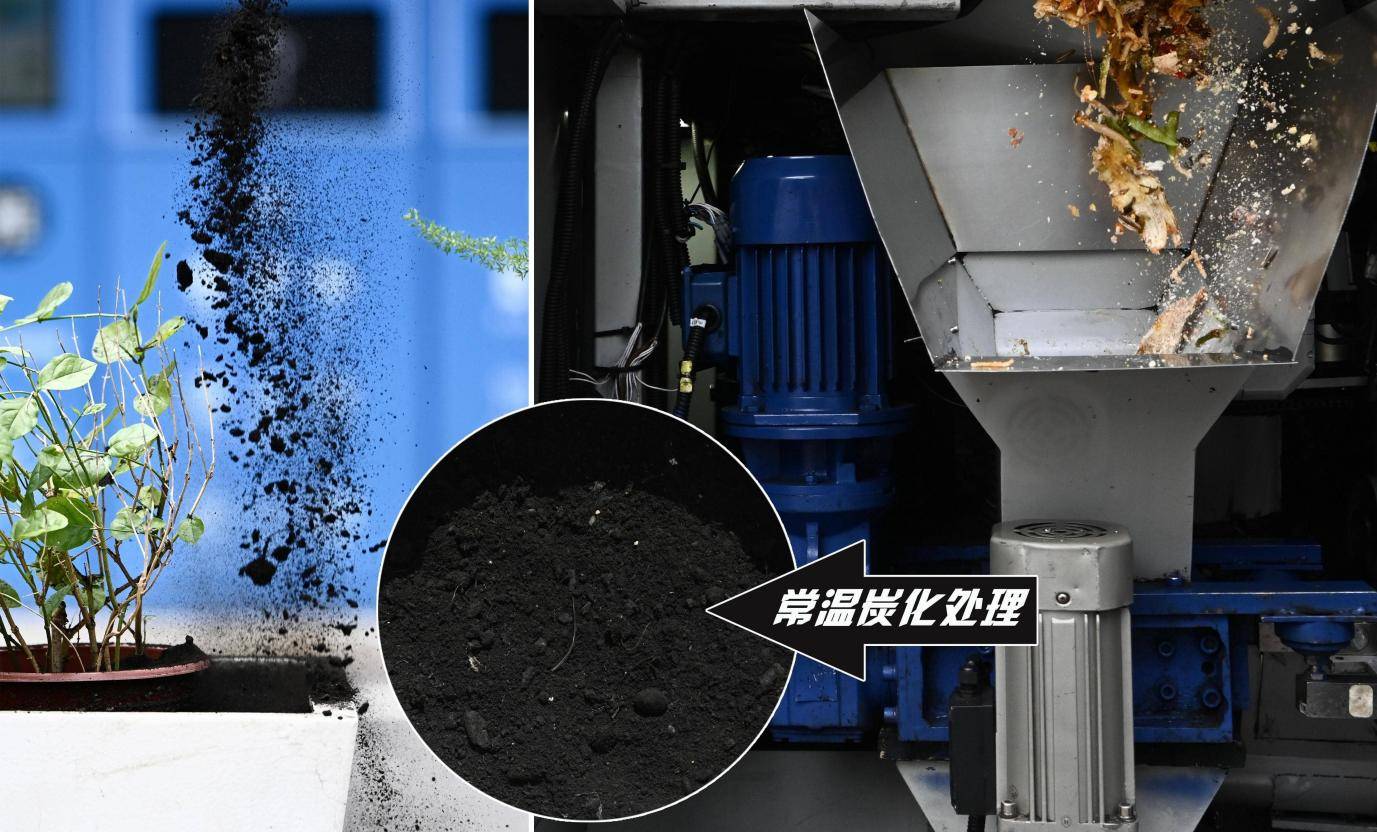
2. Energy Efficiency Performance: The equipment adopts a modular design, with the daily power consumption of a single unit equivalent to that of a household. It can operate 24 hours a day without manual supervision. The supporting intelligent control system can automatically adjust power based on the amount of waste, reducing ineffective energy consumption caused by empty transportation of garbage trucks and preheating of incinerators in centralized treatment modes.
2.节能表现:设备采用模块化设计,单台日均耗电量相当于一户居民家庭用量,可实现24小时无人值守运行。配套智能控制系统能根据垃圾量自动调节功率,较集中处理模式减少因运输车辆空载、焚烧炉预热产生的无效能耗。
3. Science Popularization and Community Participation: An innovative "Environmental Protection Experience Workshop" has been established, featuring interactive sessions such as VR-based waste treatment simulations and carbon material planting experiments. Community environmental protection leaders have been trained to form a supervision team, and a tripartite co-management mechanism involving "residents - property management - technical parties" has been established, creating a sustainable community self-governance model.
3.科普与社区参与:创新打造"环保体验工坊",设置VR垃圾处理模拟、炭料种植实验等互动环节。培育社区环保骨干组成监督小组,建立"居民-物业-技术方"三方共管机制,形成可持续的社区自治模式。
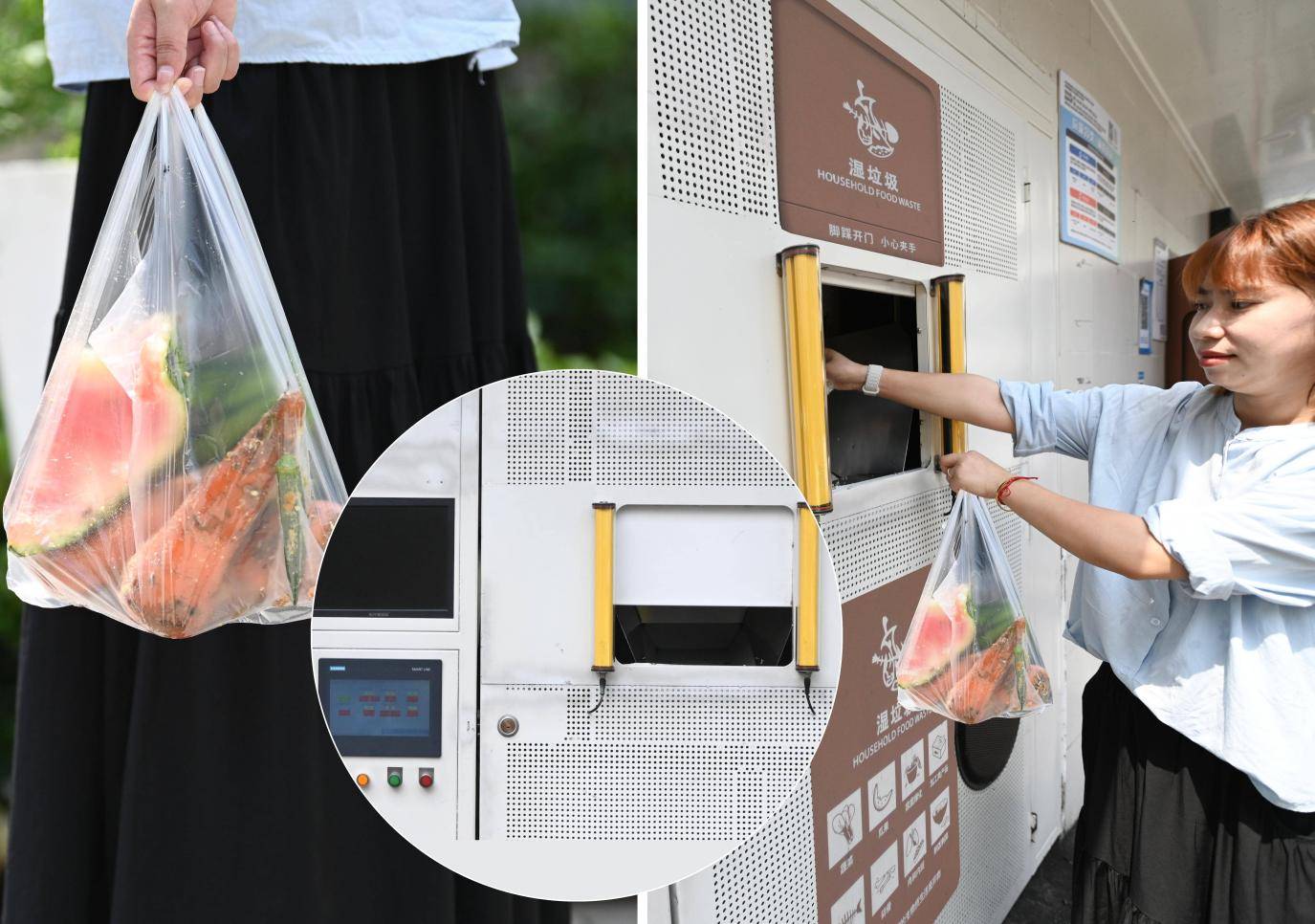
4. Pollutant Control: The treatment process adopted ensures that waste gas emission indicators are more than 50% better than national standards. The operating noise of the equipment is controlled below 45 decibels, meeting the night noise standard for residential areas and completely solving the "not-in-my-backyard (NIMBY) effect" problem of traditional garbage stations.
4.污染物控制:采用的处理工艺,废气排放指标优于国家标准50%以上。设备运行噪音控制在45分贝以下,达到居民区夜间噪音标准,彻底解决传统垃圾站"邻避效应"问题。
5. Waste Reduction and Comprehensive Utilization: A closed-loop system of "treatment - conversion - application" has been built. The annual output of organic carbon fertilizer can meet the needs of community greening. Through soil improvement experiments, the survival rate of community green plants has been increased, forming a replicable model for the on-site utilization of urban organic waste.
5.废弃物减量与综合利用:建立"处理-转化-应用"闭环体系,年生产有机炭肥可满足社区绿化需求。通过土壤改良实验,使社区绿植存活率提升,形成可复制的城市有机废弃物就地化利用模式。

Project Highlights
项目亮点
The normal-temperature carbonization technology in residential areas gives priority to utilizing existing garbage rooms, reducing investment in new construction. It achieves on-site recycling by reducing waste at the source, eliminating odors, leachate, mosquitoes and flies, and reusing the end products for greening. The technology connects sub-districts, communities and property management. The team has solid technical capabilities, and residents and users have provided positive feedback.
小区常温炭化技术优先利用既有垃圾房,减少新建投入。源头减量、消除异味、渗滤液与蚊蝇,产物回用于绿化,实现就地循环。链接街道、社区、物业。团队技术扎实,居民与用户反馈良好。
Project Implementation
项目实施
The project adopts normal-temperature and normal-pressure wet waste treatment technology. Leveraging the adsorption and surface catalytic capabilities of biochar, it uses specially-made composite charcoal to wrap wet waste—this accelerates wet waste degradation, absorbs the generated waste gas and wastewater, and prevents secondary pollution. By applying the "Harmonized Carbon Technology" and the "microorganism-catalysis coupling" system, wet waste is converted into high-value-added biochar at normal temperature, realizing the goal of "turning organic waste into resources on-site". Before the equipment was installed, the project team conducted multiple rounds of communication with the community to fully listen to residents' opinions and needs regarding waste treatment. Meanwhile, on-site surveys were carried out, taking into account the residential area's road conditions, water and electricity supply, and garbage room layout—ensuring the equipment was placed in a reasonable location that would not disrupt residents' travel or daily life. During installation, rapid modular assembly and enclosed construction were adopted to reduce construction noise and dust. In the commissioning and operation phase, technicians not only optimized the feeding cycle and carbonization time but also conducted multiple tests on the equipment's material inlet/outlet, sealing system, and deodorization device to ensure stable, safe, and odor-free operation. For resident outreach, in addition to regular promotions and demonstrations, an "Environmental Protection Experience Day" was held, allowing residents to personally operate the feeding process and directly observe the conversion of wet waste into carbon materials. During the regular operation and maintenance phase, an online monitoring platform was established to track the equipment's operating status, energy consumption, and treatment capacity in real time. Operational strategies are continuously optimized through data analysis.
项目通过湿垃圾常温常压处理技术,利用生物炭吸附与表面催化能力,以特制组合炭包裹湿垃圾,促进湿垃圾降解,并吸附产生的废气废水,避免二次污染。采用“调和炭技术”,通过“微生物-催化耦合”体系,在常温下让湿垃圾转化为高附加值生物炭,实现“有机废弃物就地变资源”。在设备落地前,项目团队与社区进行了多轮沟通,充分听取居民对垃圾处理的意见与需求,同时结合小区道路、水电条件及垃圾房布局进行现场勘测,确保设备位置合理、不影响居民通行与生活。安装过程中,采用快速模块化拼接与封闭式施工,减少施工噪音与粉尘。调试运行阶段,技术人员不仅优化了投料周期与炭化时间,还对设备进出料口、密封系统及除臭装置进行了多次测试,确保运行稳定、安全、无异味。居民宣导环节,除了常规的宣传与演示,还设立了“环保体验日”,让居民亲手操作投料,直观感受湿垃圾到炭料的转化过程。常态化运维阶段,建立了线上监测平台,实时监控设备运行状态、能耗及处理量,并通过数据分析不断优化运行策略。
Comparison Before and After Implementation
Before Implementation: The ground around garbage rooms was damp and prone to bacterial growth, forcing residents to hold their noses and detour when passing by. During hot summer months, issues such as odors, mosquitoes, and flies were particularly severe, plaguing the community environment. After Implementation: Garbage rooms remain dry and clean. The carbon materials are used to improve the community's flower beds and green belts, achieving resource recycling. Resident feedback indicates that the community environment has significantly improved, quality of life has enhanced, and many residents now proactively sort their kitchen waste at home and feed it into the equipment, developing sound environmental protection habits.
实施前后对比
实施前,垃圾房周边地面潮湿、易滋生细菌,居民路过时需掩鼻绕行;夏季高温时,异味与蚊蝇问题尤为突出,给社区环境带来困扰。实施后,垃圾房保持干燥整洁,炭料用于社区花坛与绿化带改良,实现了资源的循环利用。居民反馈显示,社区环境明显改善,生活质量提升,不少居民主动将家中厨余垃圾分类后投入设备,形成了良好的环保习惯。
Challenges Overcome
In the early operation stage, affected by the "Not-In-My-Backyard (NIMBY) effect", some residents were initially resistant to the installation of waste treatment equipment in the community, worrying about issues such as equipment noise, odors, and environmental impacts. To effectively address this problem, the technical team added sound insulation and shock absorption materials to the equipment shell and base without increasing the floor space. They also optimized the sealing and ventilation systems, controlling the equipment's operating noise and odors within levels acceptable to residents. Additionally, by adjusting the structure of the feeding port and adding an automatic weighing function, the technical team effectively resolved the issue of fluctuating treatment efficiency caused by unstable feeding quantities. Over time, residents' doubts gradually dissipated—they not only adapted to the presence of the equipment but also proactively participated in waste sorting and feeding, shifting from initial resistance to strong support. Many residents volunteered as waste-sorting propagandists, sharing their usage experiences in community WeChat groups; others took the initiative to supervise the hygiene around the equipment, creating a positive atmosphere of joint construction and shared benefits.
克服的挑战
在运行初期,受“邻避效应”影响,部分居民起初对在小区内设置垃圾处理设备心存抵触,担心设备噪音、异味及环境影响等问题。为有效解决了这一难题,技术团队在不增加占地空间的基础上在设备外壳与底座加装了隔音与减震材料,并优化了密封与通风系统,将设备运行声音与异味控制在居民可接受的范围内。此外,技术团队通过调整投料口结构并增加自动称重功能,有效解决了曾出现投料量不稳定导致处理效率波动的问题。随着时间推移,居民的疑虑逐渐消除,不仅适应了设备的存在,还主动参与到垃圾分类与投放工作中,从最初的抵触转变为大力支持。不少居民志愿担任垃圾分类宣传员,在社区微信群分享使用体验;还有居民主动监督设备周边卫生,形成了共建共享的良好氛围。
Support Received
Multiple parties joined forces to build a solid foundation. Relevant district-level units provided comprehensive support in policies, venues, and publicity. The sub-district promoted efficient resource integration, established a special working group, and coordinated efforts from the community, property management, volunteers, and other parties to resolve issues such as equipment entry, power connection, and resident communication—ensuring the project was implemented on schedule and rolled out rapidly. Property management provided in-depth collaboration to guarantee smooth execution: it not only participated in site planning and equipment installation throughout the process but also assisted in conducting resident training and publicity activities covering the entire community, effectively improving equipment utilization and waste-sorting accuracy. The Residents' Committee helped organize publicity activities to enhance resident participation. Through scientific planning, multi-party collaboration, and continuous optimization, the project has successfully achieved the goals of on-site wet waste treatment and resource recycling, providing a replicable and promotable new model for urban community.
获得的支持
多方合力,构筑坚实后盾。区级相关单位在政策、场地、宣传等方面给予全方位支持。街道资源整合高效推进,成立专项工作小组,协调社区、物业、志愿者等多方力量,解决设备进场、电力接入、居民沟通等问题,确保项目按时落地并快速铺开。物业深度协同——执行落地有保障,物业公司不仅全程参与场地规划与设备安装,还配合开展居民培训和宣传活动,覆盖整个小区,有效提升了设备使用率和分类准确率。居民委员会协助开展宣传活动,提高居民参与度。
通过科学规划、多方协作与持续优化,项目成功实现了湿垃圾就地处理、资源循环利用的目标,为城市社区环境治理提供了可复制、可推广的新模式。
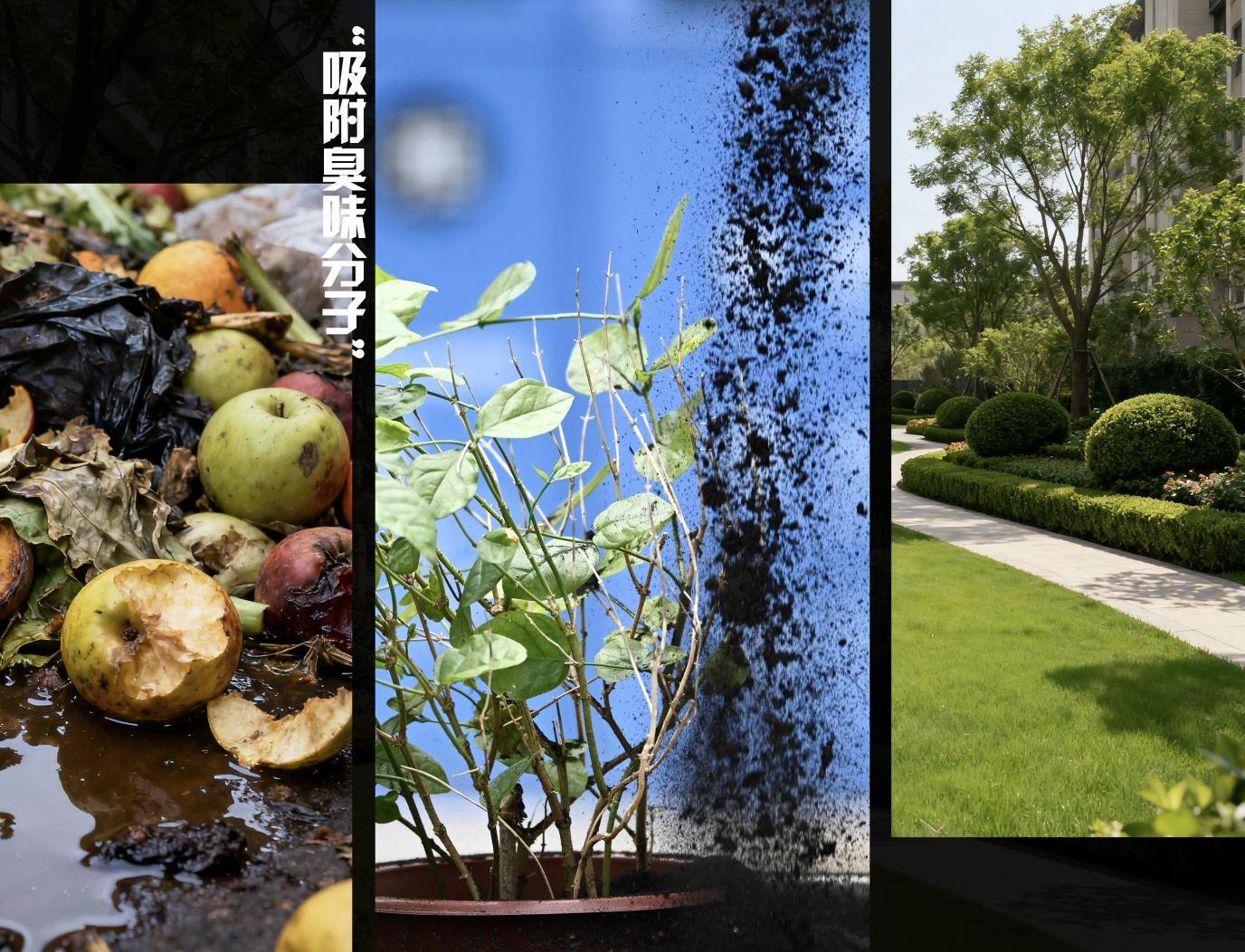
Project Impact & Sustainability
项目影响力、可推广性与可持续性
1. Innovation of Enviornmental Technology& Mechnasim: The 3-square-meter enclosed equipment developed by Taiji’s team has the characteristics of zero odor and low noise, compatible with existing garbage stations. With its modular design, techinal team successfuly improve the capacity expansion, operation and maintenance, easy for property management staff.
2. Demonstration and Leading Role: Resident satisfaction reaches over 95%, making the project a replicable model.
3. Social and Environmental Value: It reduces wet waste clearance and carbon emissions, lowering pollution from mosquitoes, flies, and leachate, improving the community environment, enhancing residents' participation in environmental protection.
4. Future Plans: Taiji Company plans to replicate the project model in surrounding communities, optimize the treatment process, expand the application of carbon materials, establish a long-term operation and maintenance mechanism, promote industry-academy-research cooperation and intelligent monitoring, and achieve the goal of energy conservation and consumption reduction.
5. Policies and Market Going Forward: Aligned with the "dual carbon" (carbon peaking and carbon neutrality) strategy and green city development initiatives, Taiji’s project is expected to receive policy and financial support from the government. It has great potential for promotion across the city and even the whole country.
1. 技术+机制双创新:3㎡密闭设备,零异味、低噪音,适配既有垃圾房,模块化设计便于扩容维护,物业易上手。
2. 示范带动:居民满意度95%+,形成可复制样板。
3. 社会与环境价值:减少湿垃圾清运与碳排放,降低蚊蝇与渗滤液污染,改善社区环境,提升居民环保参与度。
4. 后续计划:周边社区复制、工艺优化、拓展炭料应用、建立长效运维,推进产学研与智能监控,实现节能降耗。
5. 政策与市场前景:契合“双碳”与绿色城市战略,有望获政策与资金支持,具备向全市乃至全国推广潜力。
(Using AI translation)
(使用AI翻译)

零废弃学校建设之厨余垃圾篇
10-24 · 来源:中国浙江省宁波市鄞州第二实验中学 · 作者:中国浙江省宁波市鄞州第二实验中学
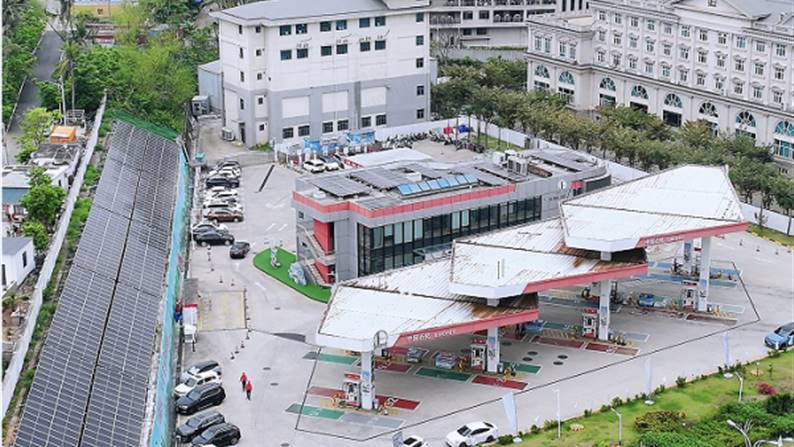
能源至净,生活至美,积极打造碳中和
10-24 · 来源:中国石化销售股份有限公司海南海口石油分公司 · 作者:中国石化销售股份有限公司海南海口石油分公司

无锡中瑞低碳生态城
10-23 · 来源:无锡中瑞低碳生态城 · 作者:无锡中瑞低碳生态城